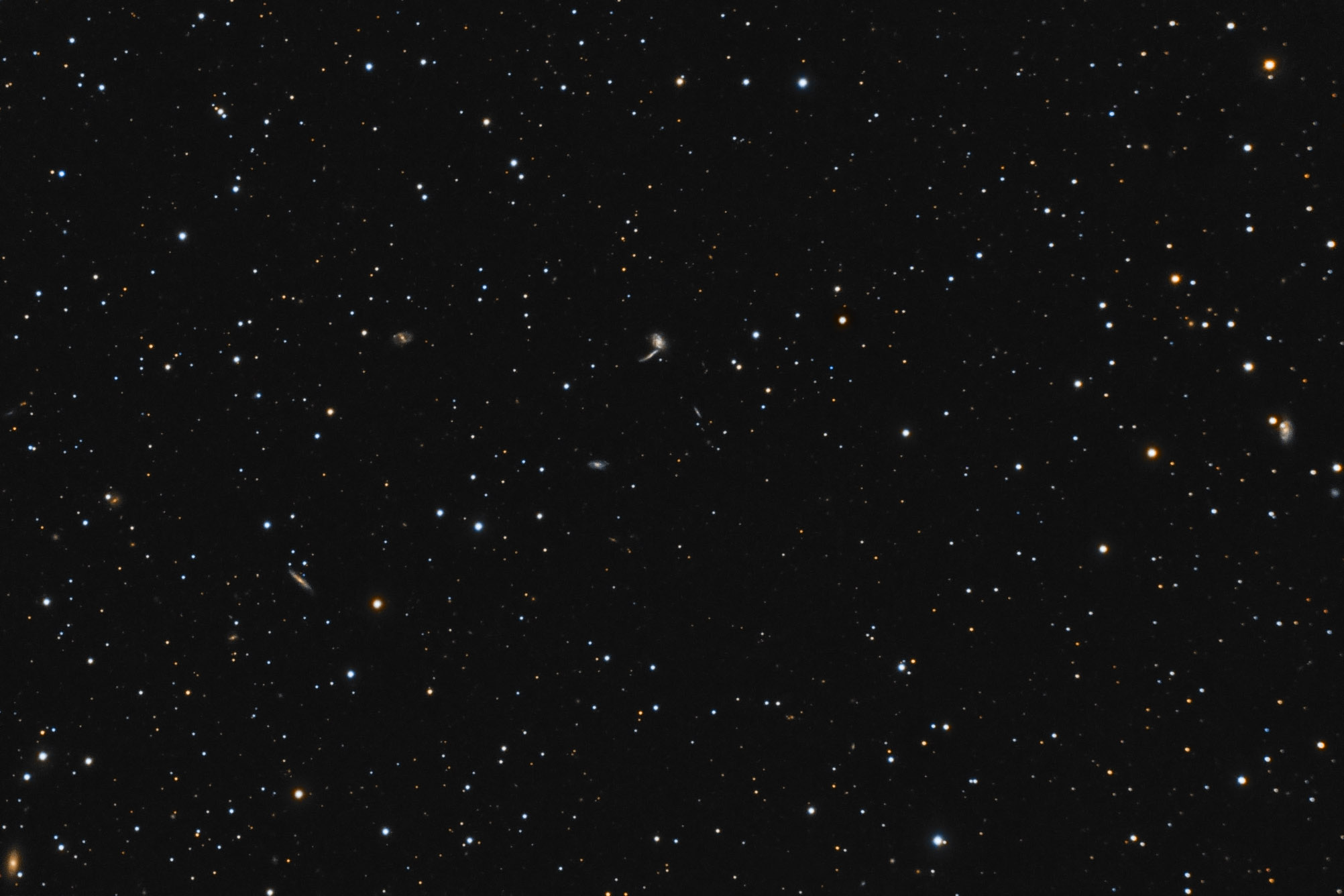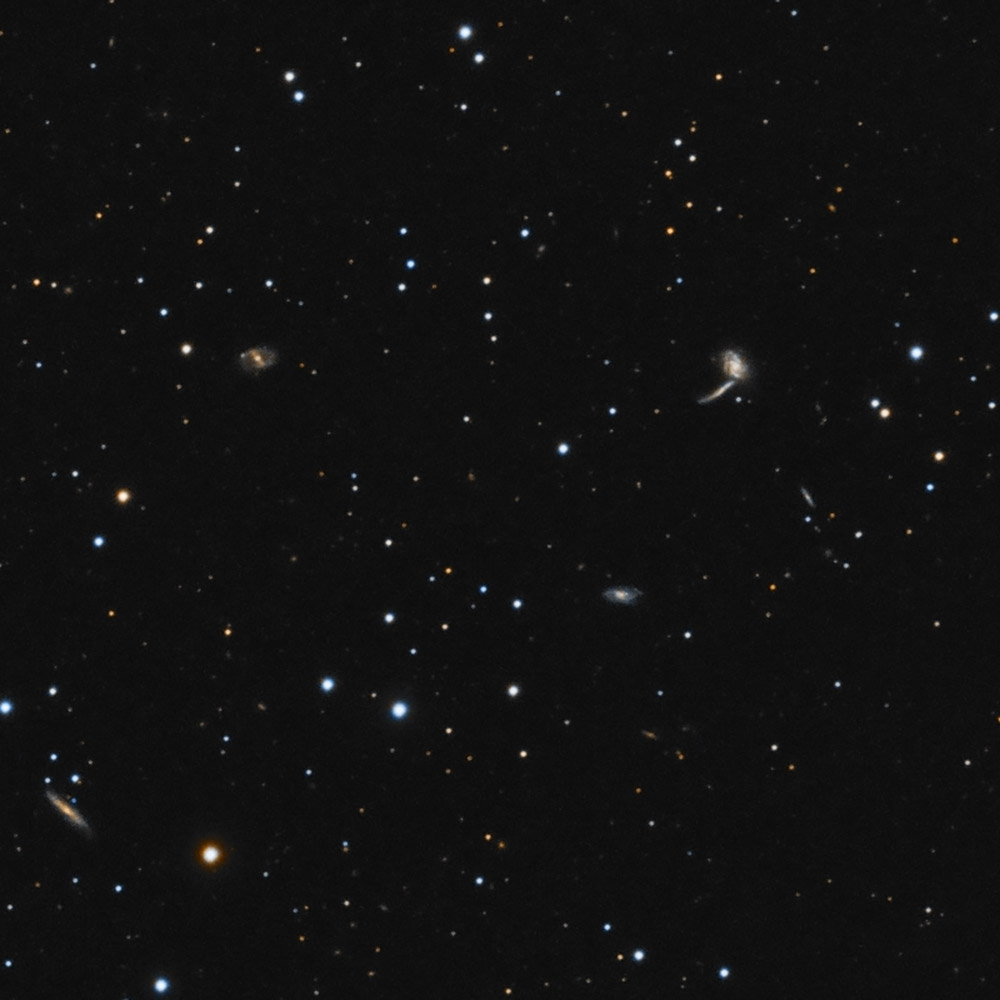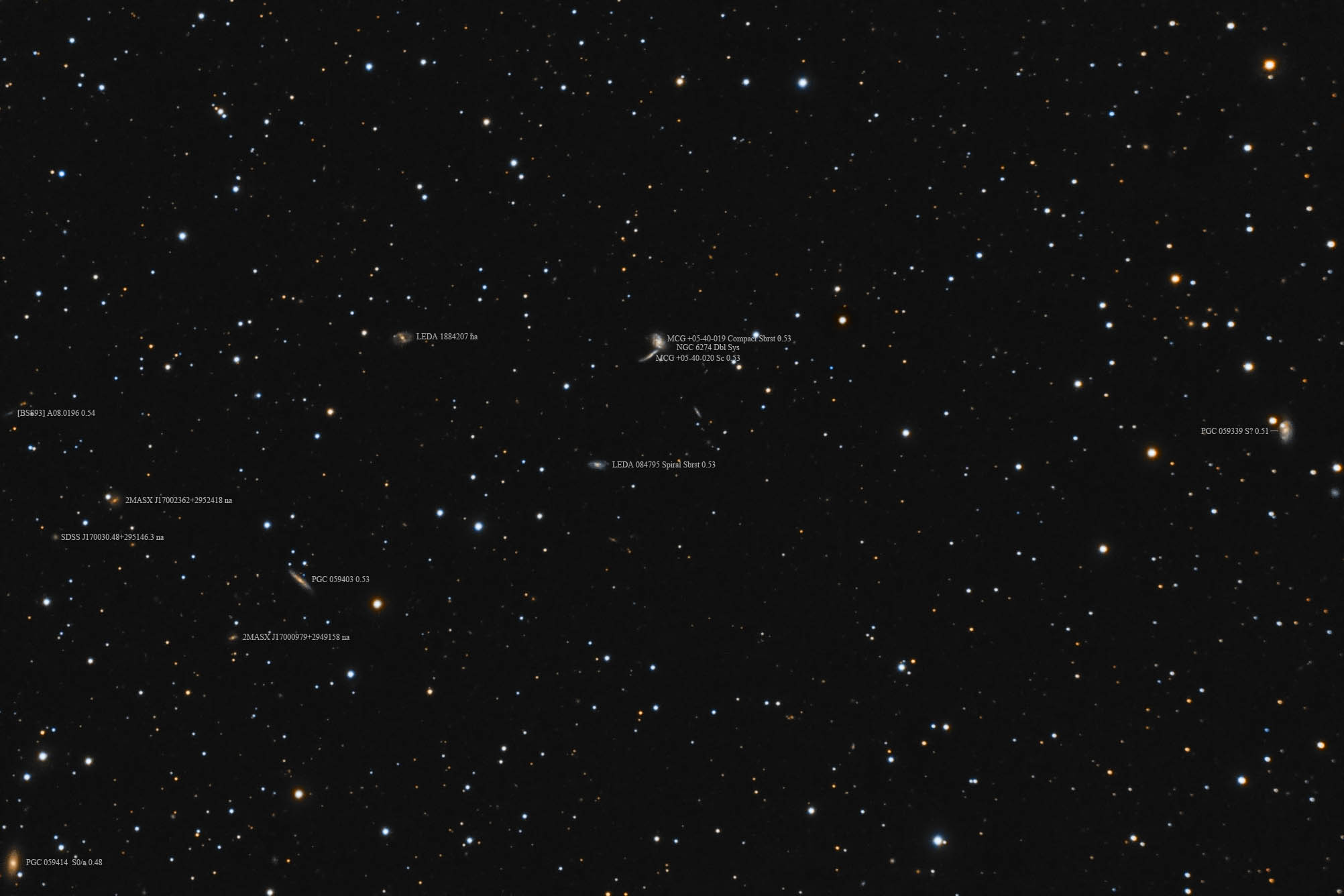| Description | Images |
Object name: NGC6274Designation(s): NGC6274, NGC 6274 is either a single spiral galaxy or a pair of them depending on the source. NED considers it a double system while The NGC Project says it refers only to the northern face on spiral. I've gone with NED on the annotated image. Seligman sides with the NGC Project and further adds that while they are at the same distance they aren't likely an interacting pair "as they do not show signs of distortion corresponding to a very close interaction or collision." The southern galaxy certainly has been severely warped by something though I agree the northern galaxy seems undisturbed. Computer simulations show most of the distortion comes well after the time of closest passage. While the individual stars will start to be pulled around it takes a lot of time for that motion to be sufficient to be seen at our great distance. Once moving they continue to for hundreds of thousands of years, long after the interaction started. If the galaxies aren't gravitationally bound one can be far distant by the time we see the distortion it caused. The denser the galaxy the lesser the damage and the more time needed to see it. This could explain why the more distant end of the southern galaxy shows more warp than the end apparently closer to the northern galaxy. If it encountered it first it would be the end to first show the results. So while they may truly not be interacting I'm not all that convinced. Related Designation(s):AKARI J1659203+295650, CGCG 1657.4+3001, CGCG 169-024, IRAS 16574+3001, IRAS F16573+3001, KPG 503, NGC 6274, NGC6274, PGC 059383, UGC 10643, |


